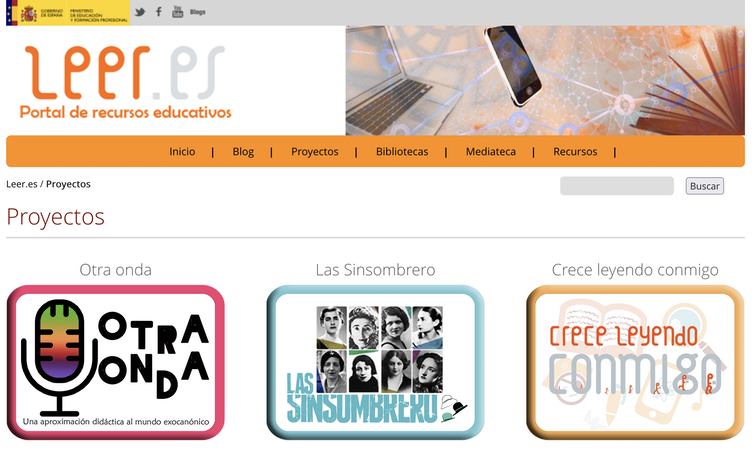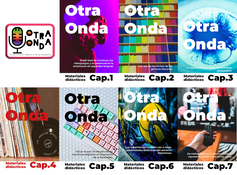There is always debate about what should be taught within compulsory education with different and legitimate points of view: increase encyclopedic knowledge, favor practical skills, or boost comprehension, for example. It is also defended to promote social and human attitudes of depth, since it is understood that the educational system forms complete people, not databases.
It is logical that there are contents that are outside the curriculum, or that are treated superficially. There are many cultural objects that are not part of the educational plans, and the usual thing is that there is a bias towards high culture: that appreciated by the elites, which forms the traditional canon, sometimes called “superior culture”. An example could be praising the cinema of Abbas Kiarostami and despise television series for being “mass”. However, there are many other types of culture that are also important in our lives: a pop band, a comedian doing a monologue, a horror movie or a late adolescent poem on Instagram, to give some examples.
Pushing the boundaries of what is worked on in class improves affective relationship With subjects, it stimulates interest and enables new reflections. That is why it is important to promote the presence of the cultural identity and the interests of the students to open the canon (in this case, educational).
Cultural identity is an individual amalgam formed by the interests, tastes and preferences of the person, but also conditioned by their socioeconomic, educational, linguistic, family context, etc. Each of us forms unique cultural intersections, and in turn we form collectives: those who are not in the hegemonic center they are ignored and made invisible. To make their cultural objects present in the classroom is to give them entity, respectability and dignity.
To do this, we have created on the portal Leer.es of Ministry of Education and Vocational Training our project “Another wave. A didactic approach to the exocanonical world “.

Leer.es / Ministry of Education and Professional Training
Beyond the margins of the canon
The reasons for placing something out of the canon are many, own and external. In some cases, the mere existence of these cultural expressions has to do, in reality, with that marginality: in it they can free themselves from ties and limitations.
However, being outside the canon takes away from the centers of power: it makes it difficult to become visible and achieve a deserved presence that transcends the most immediate. This also affects unjust and artificial borders, such as the one that opposes a high culture to a popular one.
Prejudices and own merits
Sometimes we don’t judge things for themselves. Our teacher prejudices are great enemies that make it difficult to go further, show empathy and understand others. And those others are sometimes our own students.
There are intrinsic benefits associated with the use of these other cultural objects. They are interesting on their own merits and in their differences there are great virtues: the way we interact as users with a video game is different from the experience as a moviegoer; history is full of exciting characters that transcend sexual binarism, modern music can be as rich and complex as the most exalted classical compositions …
Podcasts and teaching materials
“Another wave” it’s a series of seven podcasts that bring us closer to what is outside the canon, oriented to the last years of secondary education. In these programs we reflect on different cultural objects and how to bring them to classrooms. Thus, we talk about science fiction, videogames, progressive rock … and how they can benefit different subjects crosswise. In addition to listening to them, we can download the transcripts from that educational portal.

Leer.es / Ministry of Education and Professional Training
With each podcast We found a downloadable dossier with didactic proposals on this topic. For example, how to meet Carmen de Burgos and his work in Language and Literature, how to talk about trans people in History, or how to illustrate major issues of musical composition with examples from rock.
This exploration of the exocanonical is intentionally plural: treating these cultural contributions with respect and seriousness legitimizes them as part of a diverse education with values. For this reason, the programs have been designed for teachers who want to bring this type of content to their classrooms, and students who want to learn more.
An interdisciplinary debate
It is beneficial to think interdisciplinary and remember that social and human issues cannot be confined to the background. We can, for example, read science fiction in English and improve language skills, but at the same time, these texts speak to us about ethical and civil aspects. Not in vain, the disciplines of Humanities have been, are and will continue to be totally essential to educate citizens.
The draft seeks to promote a necessary debate, to get out of the dominant space -cultural, social or educational- and to dialogue with the many possible royalties. Two simple examples: the world of Watchmen opens conversations about uchrony and history, and digital literature about technologies and their weight in society.
We can wonder if canonical extensions are a distraction. Also if said distraction carries, in any case, positive implications. We must propose strategies to expand what happens in the classroom, something that is stimulating and relevant.
A wide and different look helps to remember that there are all kinds of people and places in the world that we can meet. Promoting the approach to other horizons in a place like the classroom sows the seeds of curiosity, which can lead to a better understanding of oneself and of others.
Daniel Escandell-Montiel, Professor of the Dept. of Spanish and Hispano-American Literature, University of Salamanca
This article was originally published on The Conversation. read the original.
Reference-www.eleconomista.com.mx